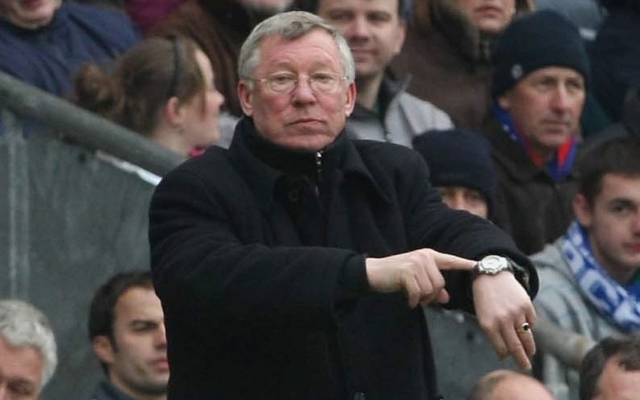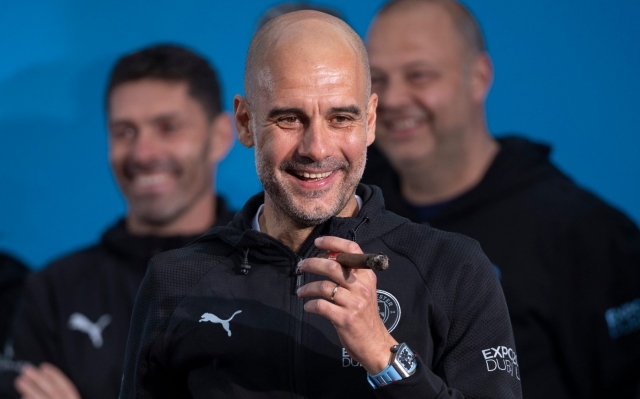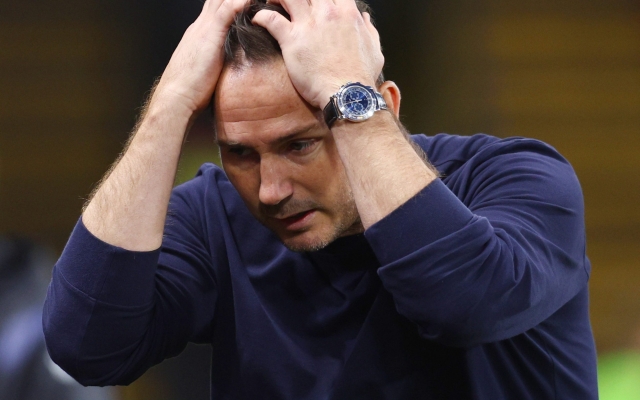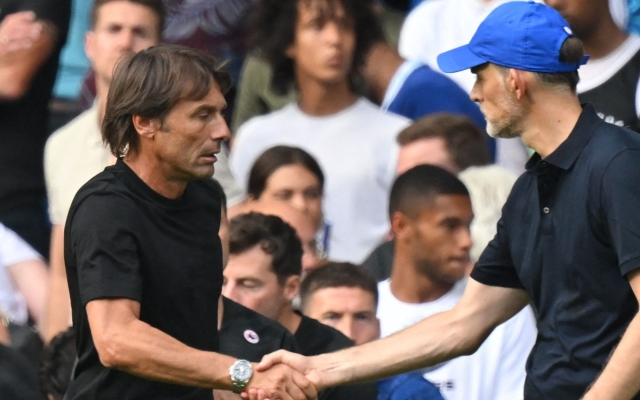 Many Premier League players now view a wristwatch as a smart investment. Photo: Getty Images/Oli Scarff
Many Premier League players now view a wristwatch as a smart investment. Photo: Getty Images/Oli Scarff
Roy Keane tells the story of being introduced to a watch salesman by his Manchester United teammate Lee Sharp. The wrist accessories were hardly Keane's style, but he was willing to pay £1,150, which he thought was the price. It turns out the watch was worth £11,500, much to the delight of the Old Trafford dressing room. “I still have it and it has gone up in value. Who's laughing now?» Keen joked.
Today, Premier League footballers are following a similar path. But while Keane's investment was unintentional, players now view wristwatches as a smart investment, as well as part of their post-match wardrobe. Owning a racehorse or a bar comes with its own risks, and luxury Swiss watches have become the safest choice for footballers.
What other product increases in price the moment a customer leaves the store? While some of the watches on display each week in the Premier League can cost £200,000, they are also one of those rare commodities that are valued the moment they are bought. By the time they walk out the door with their watch, it's already worth more than it's worth.
Reece James, the Chelsea and England defender, recently gave an interview to GQ in which he looked through his collection, which the interviewer estimates brought in around £2 million for the shoot. He talks about being addicted to his collection, looking for a «safe» investment, but also having his own collection tailored to his style. Harry Kane, Virgil van Dijk and Marcus Rashford are known watch lovers.
View this post on Instagram
British GQ post (@britishgq)
At Manchester City, Fabian Delph and David Silva are considered trendsetters and wore the world's finest watches on their wrists. Now their open-top parades after trophies are a catalog of the best watch movements on the planet.
This group of Premier League royals has an edge over other collectors. The main problem faced by the general public is to get their hands on these new wristwatches even if they have money. Retailers of popular Rolex brands have long waiting lists that last for years before a Daytona or GMT Batman becomes available.
There is a creepy sign on the Rolex store window: “For exhibition only.” It's no longer the case when you go to a store and buy a watch. Premier League stars have a compelling case for moving up the waiting lists. Coaches have billions of fans closely watching every move on the sideline, and players' actions are recorded as they leave the stadium. They also have the wealth to quickly expand their collections and investments.
“Watches often reflect character, and there are different watches for different moods and occasions,” says Ramon Calliste, former Manchester United striker. , who after his playing career moved into the watch business and owns the Global Boutique store in Mayfair.
“It’s always nice to see managers who have a good understanding of watches and their complications. Some are a little louder, others are more subtle and don't wear gold. These are competition horses and at the end of the day you can't beat Rolex.»
One of the iconic images of the Premier League is Alex Ferguson pointing at his watch, suggesting to the referee there is a way to go in stoppage time. or Fergie time, as it came to be called.
 The sight of Sir Alex Ferguson frantically pointing at his watch will long be associated with the United manager. Photo: Getty Images/John Peters
The sight of Sir Alex Ferguson frantically pointing at his watch will long be associated with the United manager. Photo: Getty Images/John Peters
Ten years after Ferguson's resignation, managers are still reminding officials about their timekeeping, but the wristwatches are likely to be Swiss, one of the most sought-after accessories in a world where demand outstrips supply, and those Those who follow the technical field know their Patek Philippe by their Richard Mille. Even tracksuit managers can now be seen wearing rare Rolex watches.
Just a quick glance at the football coverage is a showcase of watchmaking art. Hublot, relative newcomers to the market, appear on the fourth official's electronic board as he announces how many minutes of stoppage time will be played. Hublot is also featured on Gary Lineker's wrist every week in his promotional photographs for Match of the Day.
On game day, a wristwatch is as much a part of a coach's ensemble as a tracksuit, baseball cap or tailored suit. In the technical realm, outfit changes are rare, but for those who look closely, subtle details of individual flair can be seen.
In the Premier League, the king of the wristwatch is Pep Guardiola. Two seasons ago he favored a discreet Rolex Cellini with a white dial and leather strap, then returned to his Richard Mille 010 as Manchester City edged closer to the title. For the Treble campaign he often wore A Lange & The Sohne Datagraph – together with its lucky bracelet – is a watch for the serious watchmaker.
 This seems to be a quality item. wrist candies are a vital component of the Premier League bench. Photo: Getty Images/Visionhaus
This seems to be a quality item. wrist candies are a vital component of the Premier League bench. Photo: Getty Images/Visionhaus
Guardiola isn't the only one using Richard Mille, whose slogan is «a racing car on the wrist.» The incredible value of the watches — they sell for hundreds of thousands of pounds — is due to the tourbillon technology used. Roberto Mancini is an ambassador for the brand and the football-inspired RM11-04 watch is named after him.
Other managers who clearly love watches include Frank Lampard, who often wore a Patek Philippe watch at Everton. , a brand that is as difficult to buy at retail price as Rolex. In his interview, James joked that Lampard has «more Pateks than there are in the catalogue.» Brendan Rodgers was spotted wearing a Patek Nautilus, while David Moyes also wore a Swiss watch on the touchline.
 Frank Lampard has a proven soft spot for Patek Philippe. Photo: Getty Images/Clive Rose
Frank Lampard has a proven soft spot for Patek Philippe. Photo: Getty Images/Clive Rose
Clubs have links with companies such as Tottenham and IWC, while Hublot has been linked to Chelsea. But managers can wear theirs. Marco Silva wore a Rolex Explorer II at Fulham this season.
Mikel Arteta also favors Rolex and wore a GMT watch throughout the All or Nothing documentary, his watch telling him the time in different time zones, which could be the most important function for a manager after a stopwatch. While Antonio Conte was at Spurs, he was a fan of Rolexes and owned a Daytona, a watch popularized by actor Paul Newman.
Calliste saw the popularity of watches when he was a player at Old Trafford and The popularity has only increased.
 Antonio Conte (left) is a fan of the Rolex Daytona. Photo: Getty Images/Glyn Kirk
Antonio Conte (left) is a fan of the Rolex Daytona. Photo: Getty Images/Glyn Kirk
“Even when I was younger, 15 to 20 years ago, people were into their cars and their watches,” Calliste said. “It’s a different perspective now because they’re seen as assets and investments. To see some of these players that I still talk to today that have nice stuff in their collection and years ago I paid really good money and kept it in pristine condition and now it's just off the charts. This is what we want from all our investments.
“There are always those who are selling and it is difficult to know when to enter at the right time and exit at the right time, but I believe those who hold on will win. You may get some of them wrong, but not all of them are investments. If you follow your heart, you can get 10 years of joy out of it, and that can replace any profit.»
The Dark Side of the Watch Market
The dark side of the luxury watch market is that owners become victims of thieves. Robert Lewandowski's watch was stolen outside Barcelona's training ground while he was signing autographs and police later recovered it. In general, the value of these watches is increasing, although the recent sharp rise in value has leveled off. As the management merry-go-round speeds up and jobs are lost, these investments remain valuable.
“I've been in this business for a long time and have set myself up on a great path seeing how these pieces are valued,” Calliste said. “They're going up in value, there's been a healthy correction which is more realistic because how high they were going was becoming unsustainable. This was getting more dangerous. You couldn't walk around with an £80,000 watch that's now worth £400,000 on the gray market.
“If you buy it a few times a year, you've moved on. It's a jackpot. There has been dramatic growth over the years. It is difficult to predict where it will go, a slow tilt is beneficial compared to a fast tilt. At the moment the market is stable. It gets stronger and stronger.»






















































Свежие комментарии